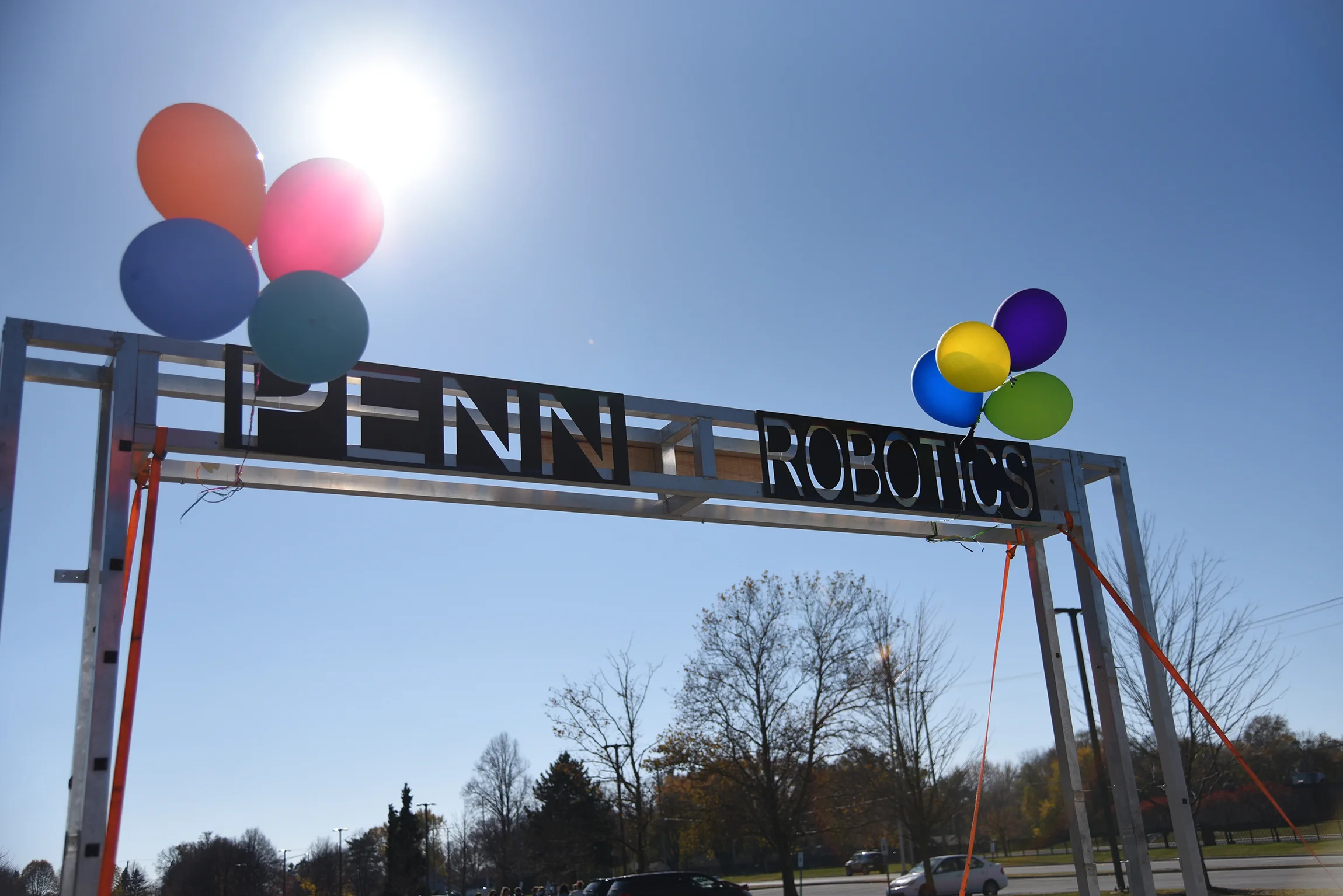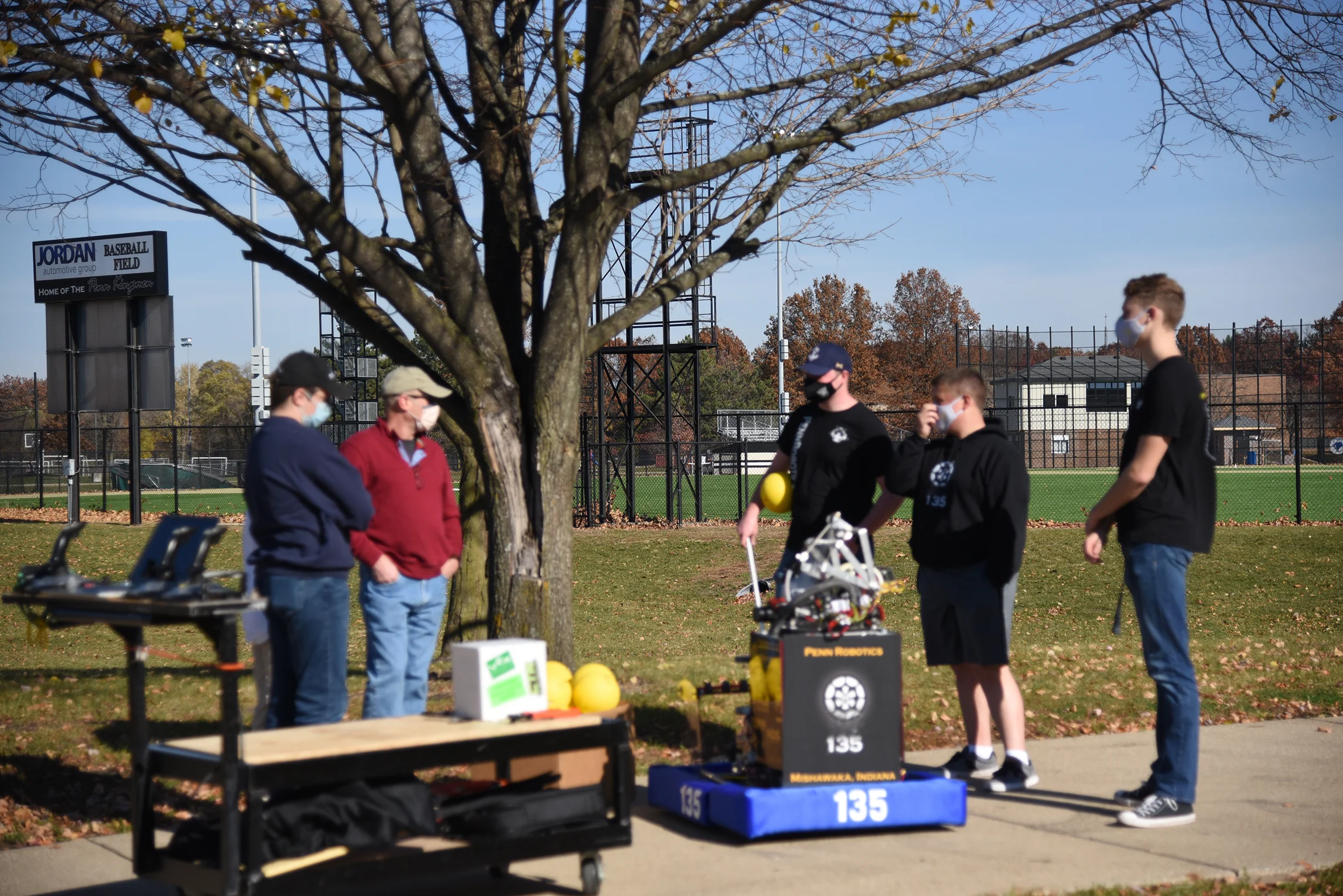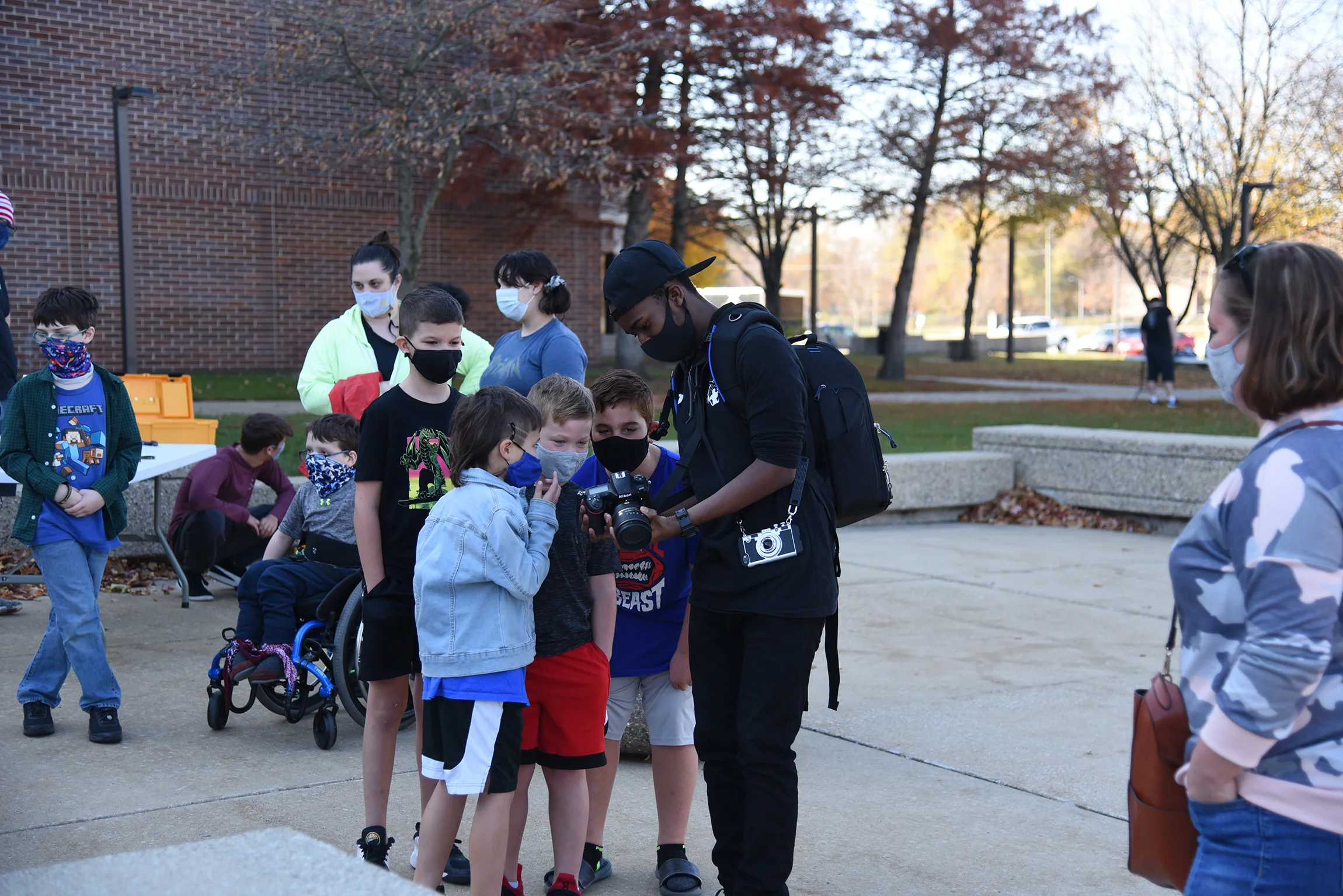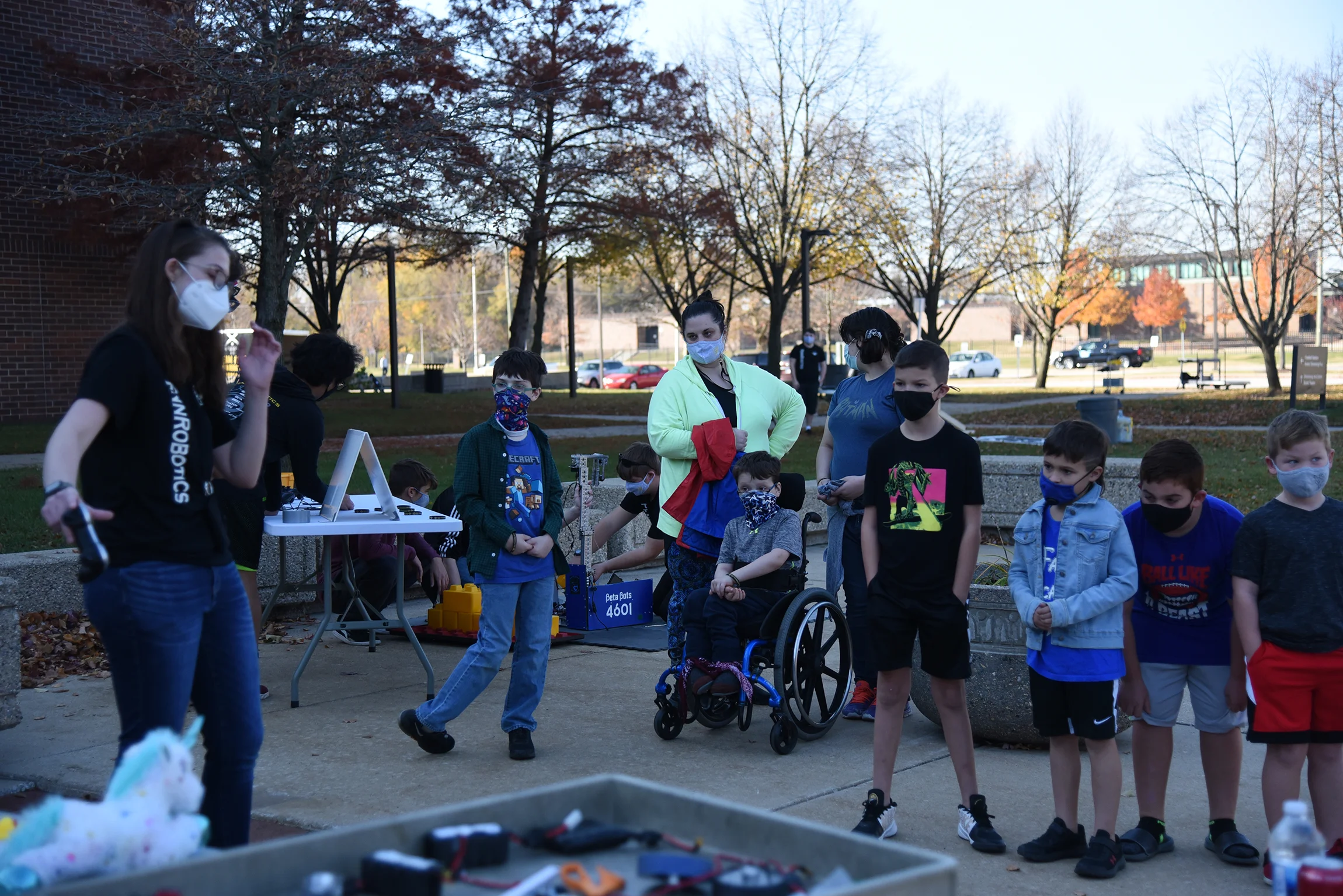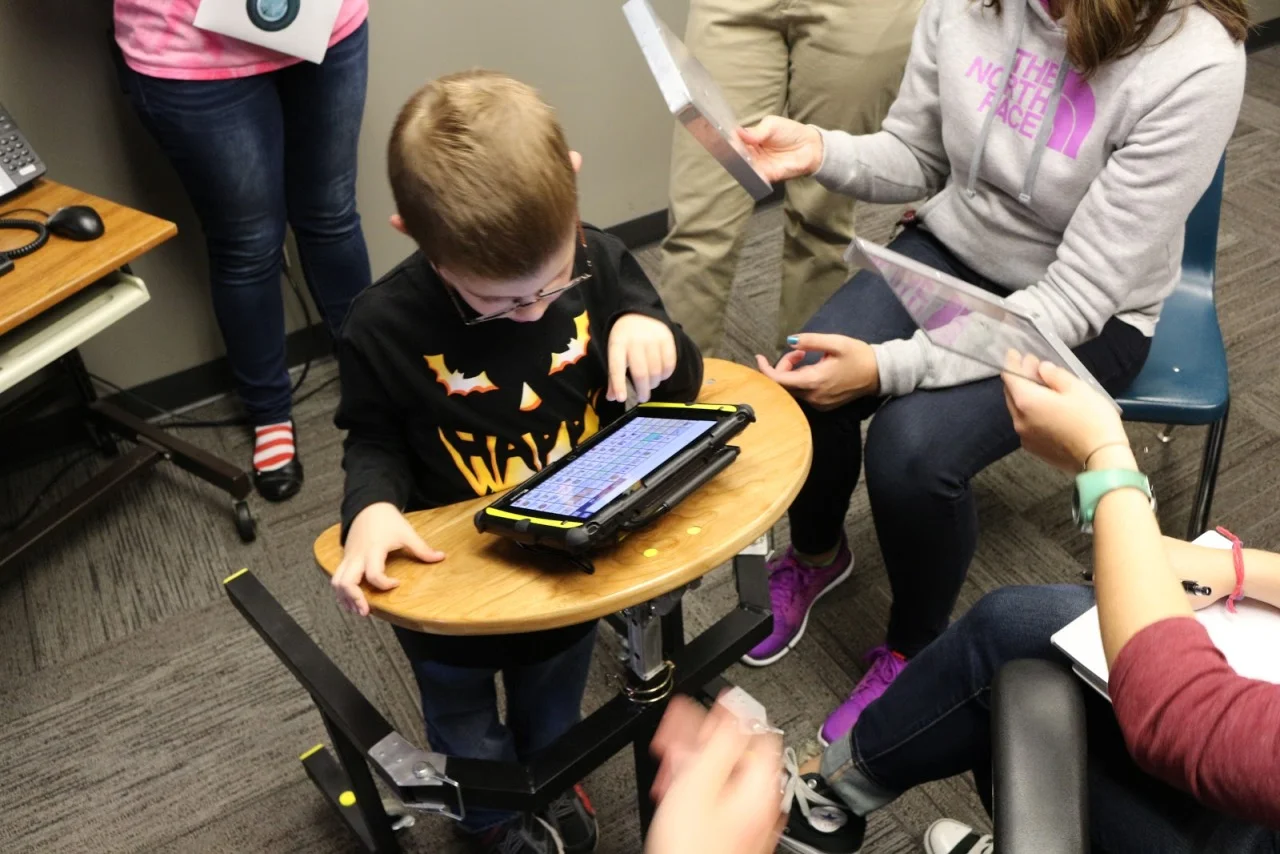
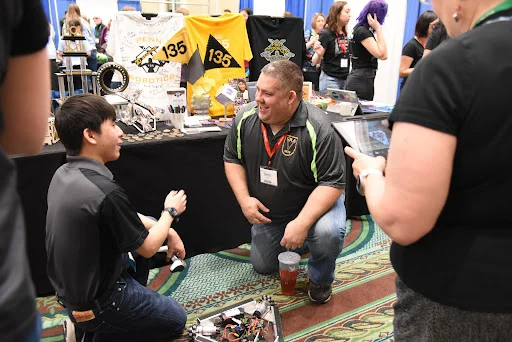
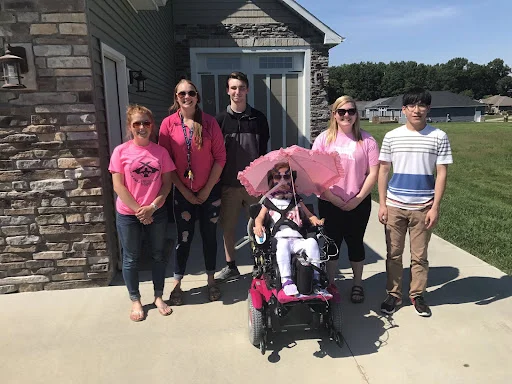
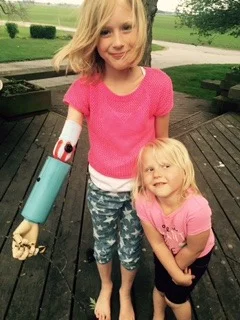
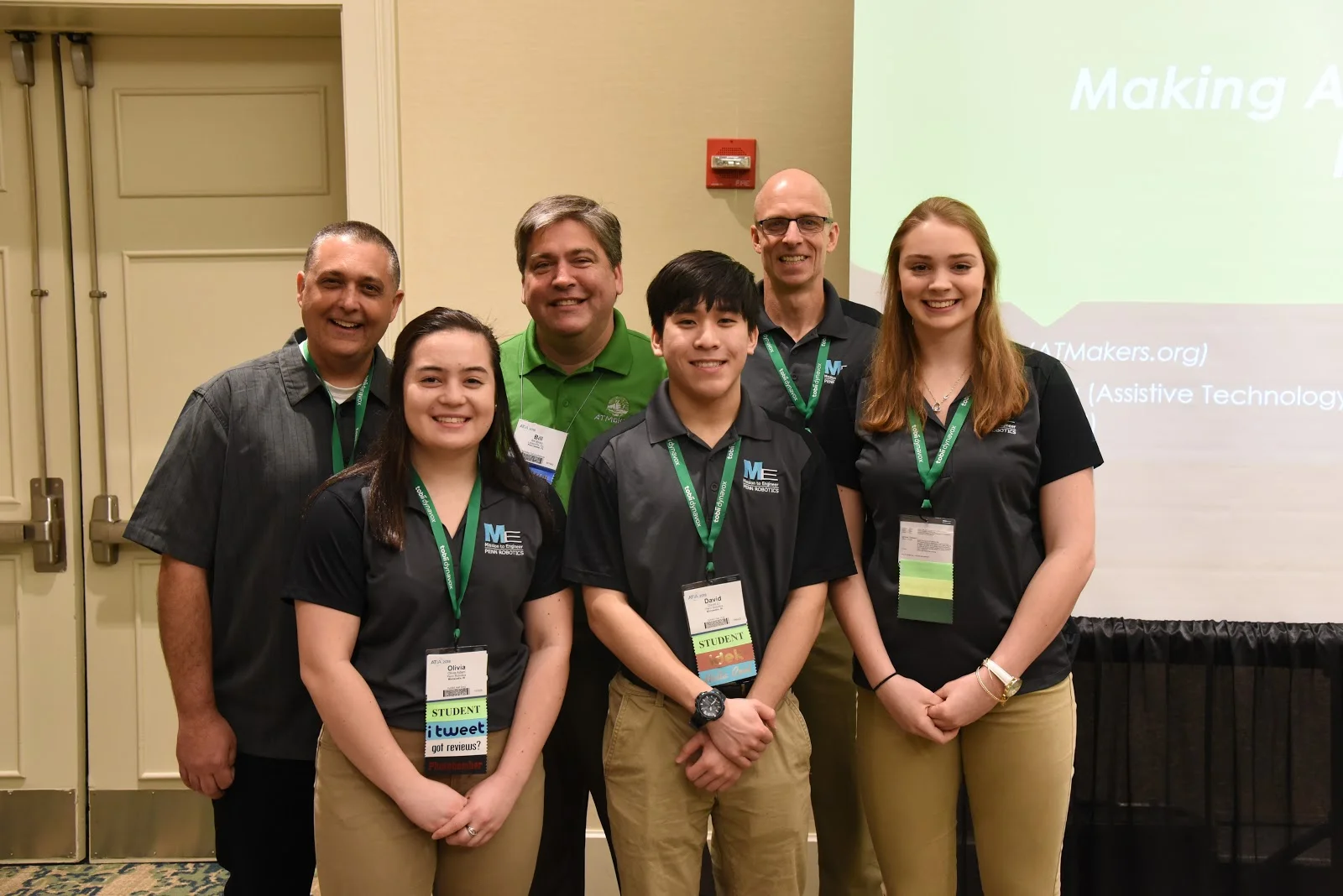

Mission to Engineer was founded by ATMAkers and Penn Robotics in 2017, all thanks to a family in need of assistive technology. The primary goal of ATMakes was to introduce those in need of Assistive Technology to local makers that would be willing to execute the project that needed to be done for the families in need. Prior to Mission to Engineer, Penn Robotics was one of the facilities that accepted the offer to help a family in need -the Hunt Family. Bill Binko, founder of ATMakers, first introduced Penn Robotics to the Hunt Family with very high expectations for the future. Upon their introduction, Team 135 was able to learn more about the diagnosis of Ella Hunt and the ways that they would be able to help.
Ella was diagnosed with SMA (Spinal Muscular Atrophy)Type 1, a disease that prohibits her from developing muscle. Unfortunately, this diagnosis means that Ella is incapable of moving on her own, including the movement of her vocal cords. Although Ella is incapable of traditional speech, she is capable of communication with the use of an amplification device called the Eye Gaze. She struggles to express herself with her peers due to the challenges imposed by her condition. Team 135 states that, “We are trying to improve the quality of her life by developing technological solutions to everyday problems that people overlook, the ways of communication and entertainment. Not only are we trying to improve Ella’s life, but we are trying to further fellow students’ understanding of engineering in the real world.” Shortly after Team 135’s initial greet with Ella and her family, they began the project known as Engineering Ella. This project has been featured on multiple different websites, including Bill Binko’s ATMakers, and Adafruit and is still recognized as the project that started it all. Our objective is to share Ella’s story and to help provide other families with the support they deserve.
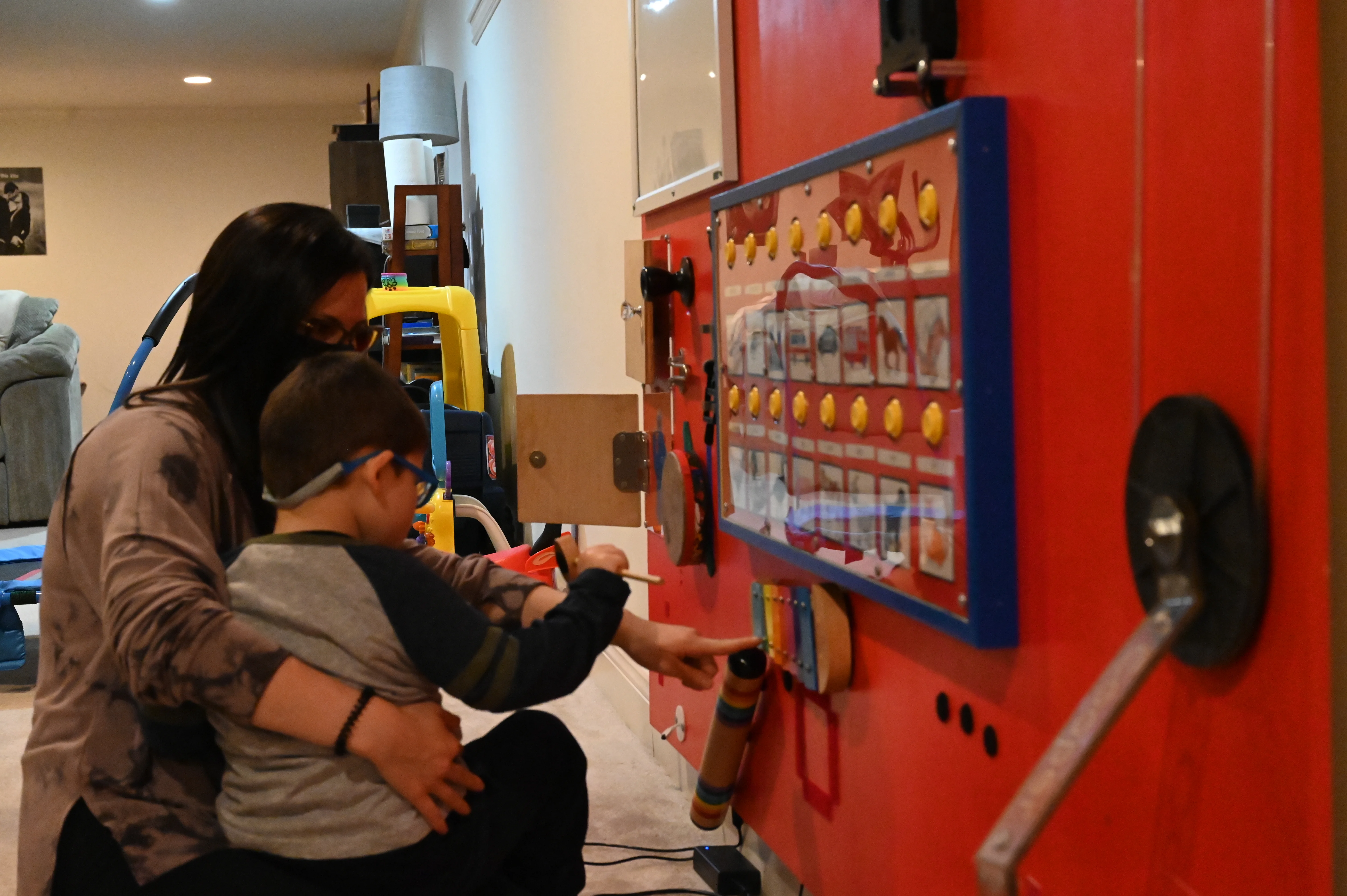
In early February of 2021, our team was introduced to a boy named Cooper New by Joe O’Reilly. Cooper has a rare genetic disorder and is faced with many obstacles when it comes to development and daily life. Our Mission to Engineer team, at the time, set out to design and build a sensory wall that he could use to help build auditory, sensory, and motor skills. We worked closely with the family to design the board with Cooper’s needs in mind, and we customized it to fit his personality.
The sensory board we made is a 6 ft by 4 ft wooden board that has many different activities on it that he can engage with. The focal point is a soundboard that incorporates images with labels above them and 16 buttons that, when pressed, play a sound associated with the respective image/button pair. This portion of the board was critical as Cooper is enamored with sound and this feature draws his interest to the entire board. This sensory tool also encompasses three different instruments for auditory engagement, puzzle pieces with tactile objects for sensory engagement, and different types of door handles for motor skill improvement.
Through the pandemic, Team 135 has worked through many roadblocks and setbacks as they presented themselves. We were welcomed into the family’s home on February 9, 2022, in order to install the sensory board into their basement. We were very thrilled to see the excitement come from Cooper’s face when we uncovered his new sensory wall. Cooper’s parents are now able to use this sensory wall for Cooper’s entertainment as well as development. They utilize different features to conduct therapy with Cooper. This is typically difficult as Cooper does not always want to engage with therapy. However, the sensory wall is full of sounds and other fun tools that enable Cooper to keep his attention and interest. Once Cooper has grown out of the sensory wall, the family will pass on the board to a local Autism center to continue helping individuals for years to come!
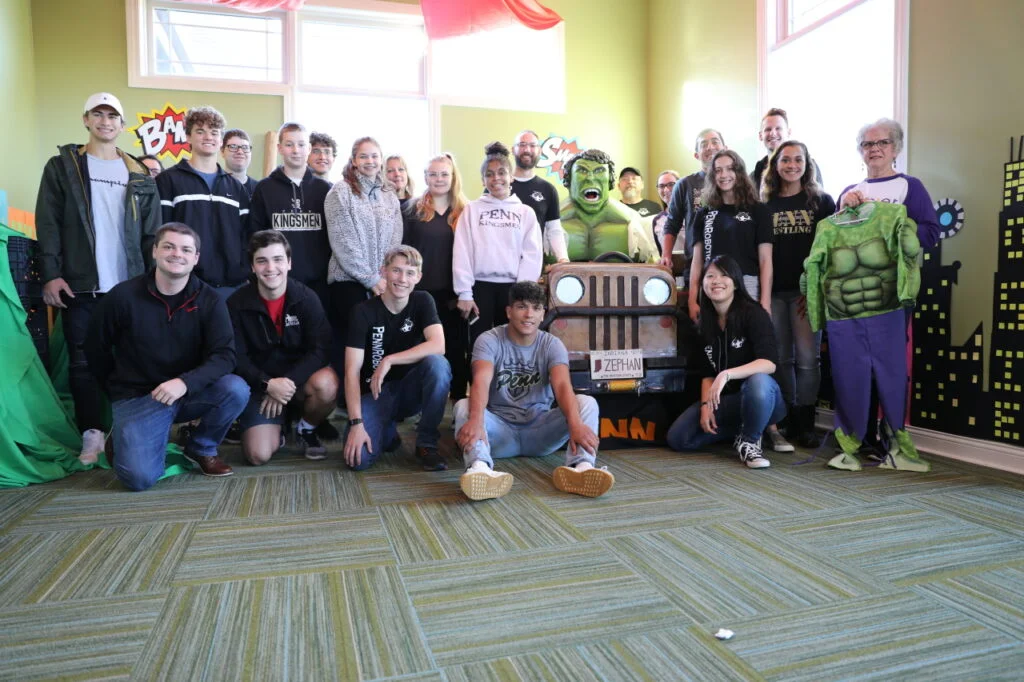
Over the past couple of months, Penn Robotics has been working with Joe O’Reilly, Magic Wheelchair, Premier Arts, and various other Penn High School Classes to create a very special project for a very special boy, Zephan Cantu. Zephan has Cerebral Palsy and is bound to a wheelchair. His favorite superhero, as well as a nickname, is The Amazing Hulk, as a testament to all he has gone through due to his disease.
While this project was a great interdisciplinary opportunity for Penn students to learn new skills and work with groups they wouldn’t otherwise work with, it is more than just an academic project. For five years, Penn Robotics has been working with children with disabilities, and we have encountered the same issue over and over again: the lack of inclusiveness for children with disabilities.
Unfortunately, much of the world is not designed with inclusiveness in mind. The lack of options for Halloween costumes for children in wheelchairs is what lead to the creation of the Magic Wheelchair organization in 2008. While progress has been made since then, there is still very much a demand for products that are made with the disabled community in mind.
Penn Robotics is incredibly lucky to have the chance to work on this project and we have been fortunate to get media attention on both a local and national scale. With this exposure, we are hoping to send a message of inclusiveness. We don’t want this to be a one-time event, but rather, something that will spread throughout the nation to other schools and corporations who will hopefully realize the importance of embracing diversity and helping the communities that are so often overlooked.
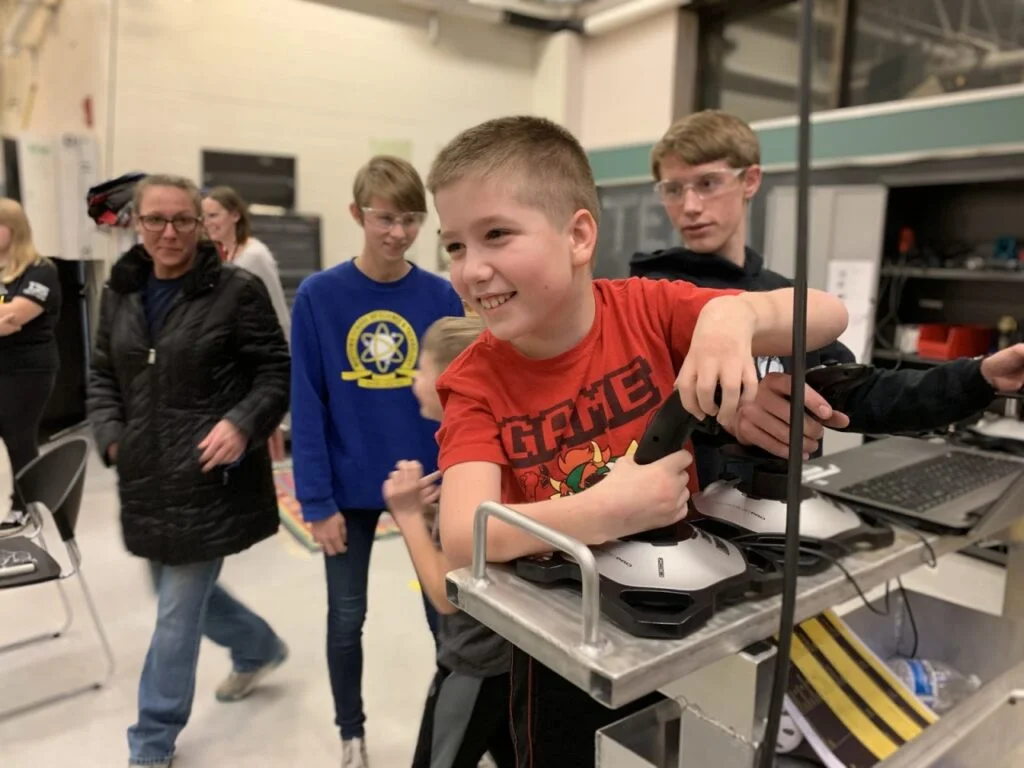
Last year, we were contacted by Mr. Addison, Isaiah’s gym teacher. Isaiah is a strong-willed fourth grader that is full of curiosity, creativity, and desire who also happens to be inflicted with Arthrogryposis Multiplex Congenita (AMC), a disease that affects the development of multiple joint contractures. While he and his family have been thriving on their own, we were contacted because Isaiah has been getting frustrated in the limited adaptations of the class’s “scooter game” he could do because of his condition. Soon after, we scheduled an initial meeting. This was a great chance for us to learn more about Isaiah and his needs and for them to learn more about us. From this meeting, we found out that Isaiah was having trouble with a simple daily task — putting on his socks. We have created a small sock aid for him and are working on the scooter adaptation.
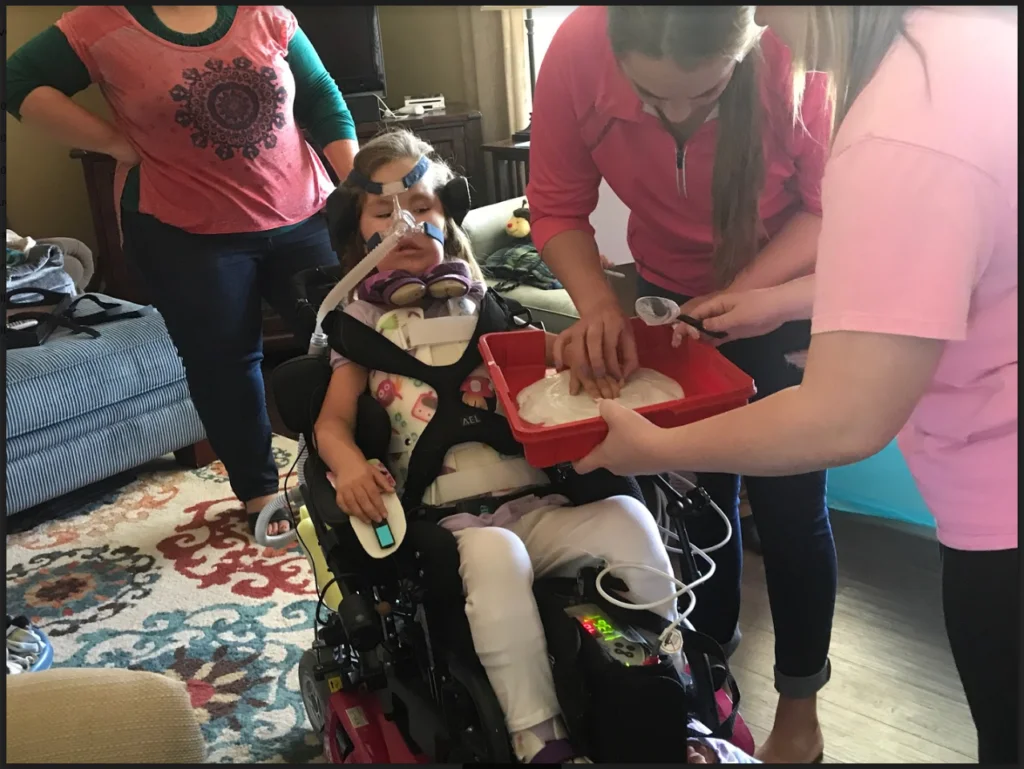
Ella has Spinal Muscular Atrophy Type 1 (SMA). This diagnosis prohibits her from moving on her own and speaking because of the underdevelopment of body muscle. Team 135’s goal was (and is) to improve the quality of her life by developing technological solutions to her everyday problems, such as communication and entertainment. One of the various projects we did for Ella was reprogramming her powered wheelchair, with this, Ella had the autonomy to move her own wheelchair, something most people with SMA are not able to do. We also worked on a variety of other projects for Ella, such as a food tube overflow sensor, an arm stabilizer, and adapting tools.
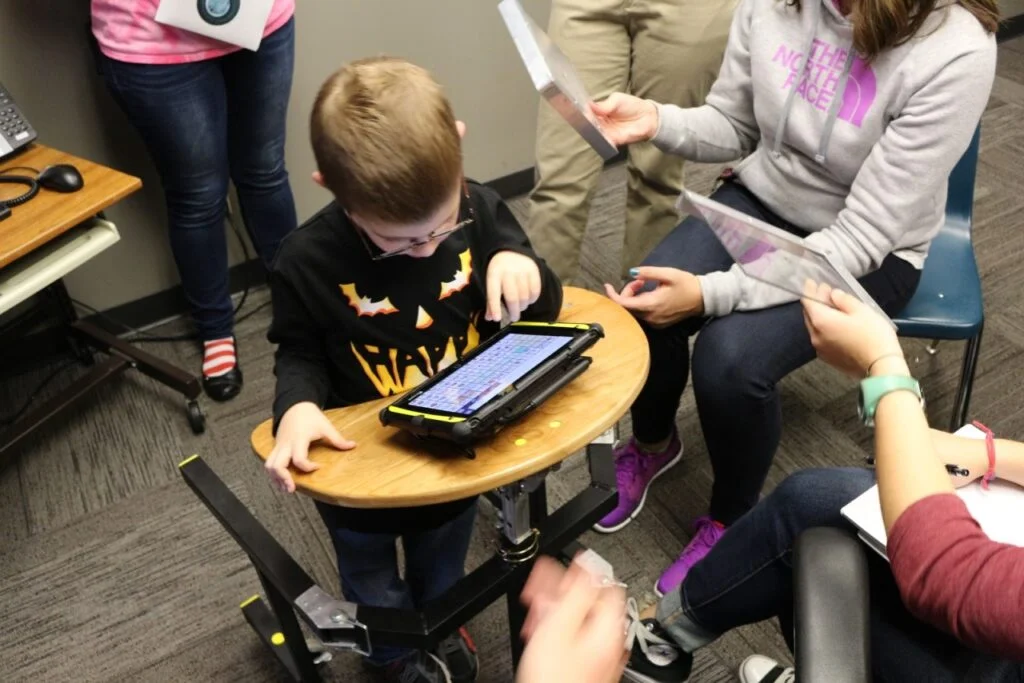
Braylen has Joubert Syndrome, which is a disease leading to the underdevelopment of the cerebellar vermis and a malformed brain stem. This led Braylen to have issues with low muscle tone, leading to balance and coordination issues and speech impediments. To allow Braylen to communicate with his peers, he has a communication tablet called the Accent 800. However, this tablet is 2.4 pounds and far too heavy for him to carry throughout his day. This reduced the effectiveness of the device considering he couldn’t take it to recess, a vital time for him to communicate with his friends. To solve this problem, Penn Robotics created a mobile table that he could take anywhere, allowing him to communicate with his peers all throughout the day.
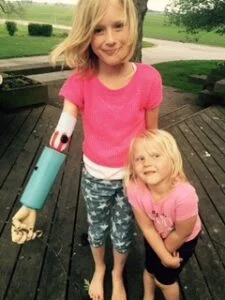
Our first assistive technology creation was a prosthetic arm designed to help Grace, a young girl born without half of her right arm, gain more mobility and independence. Everywhere Grace went, she would struggle to interact with her peers due to this physical disability. This was our first ever assistive technology project and it opened our eyes to a much bigger world around us. We 3D printed a prosthetic arm for her and used a muscle sensor, Arduino, and servos to allow her to interact with objects with her new hand.
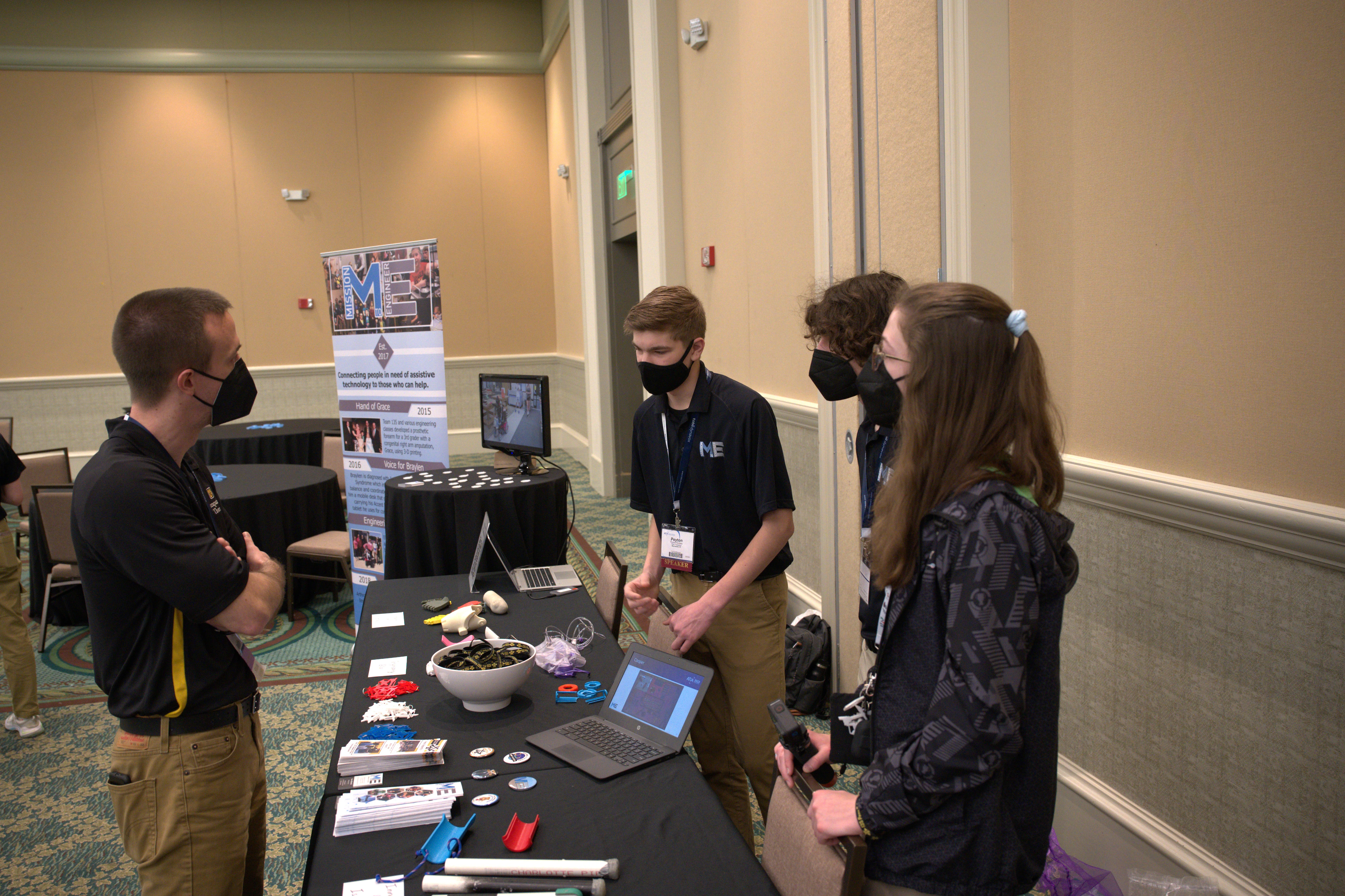
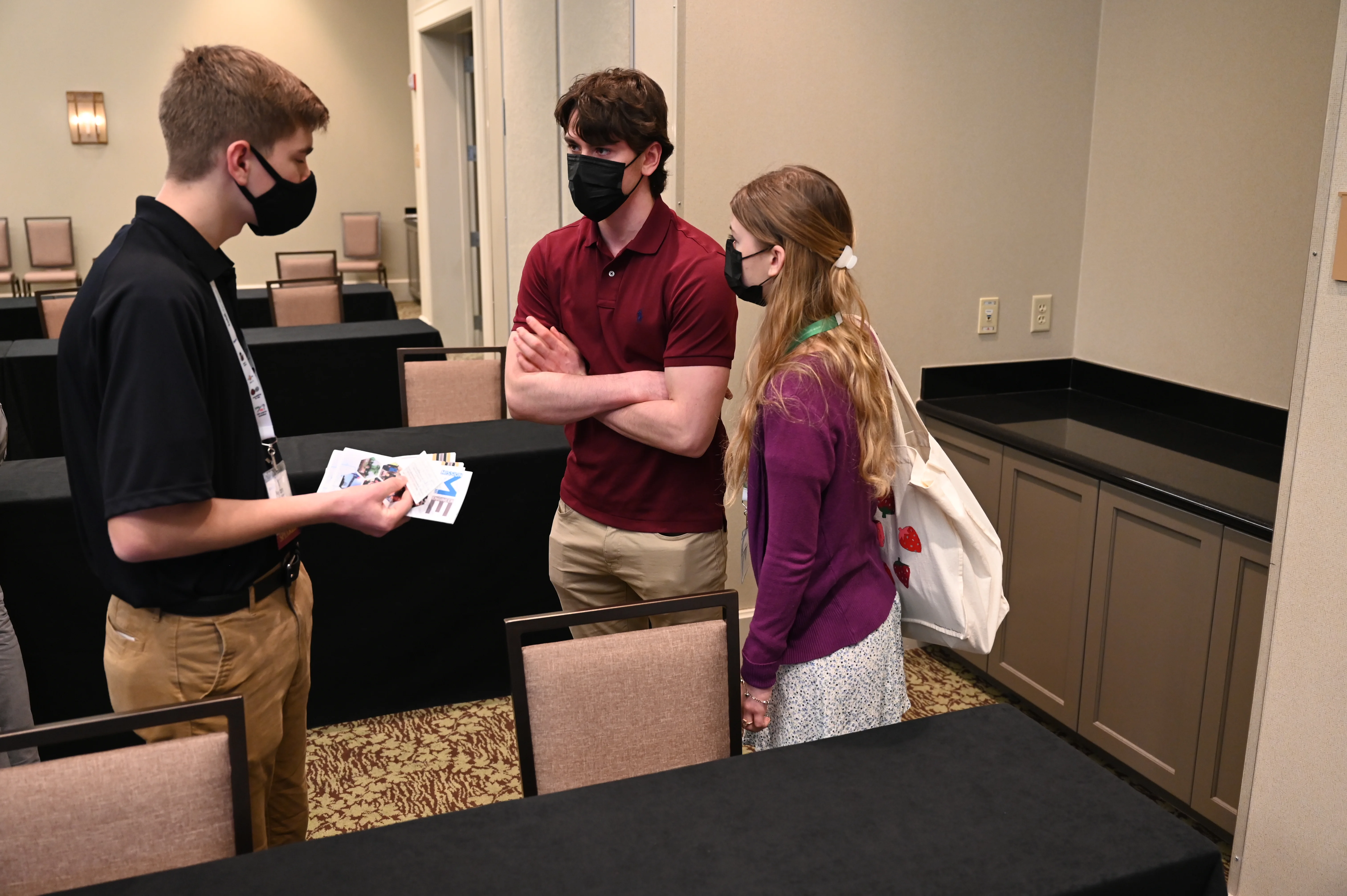
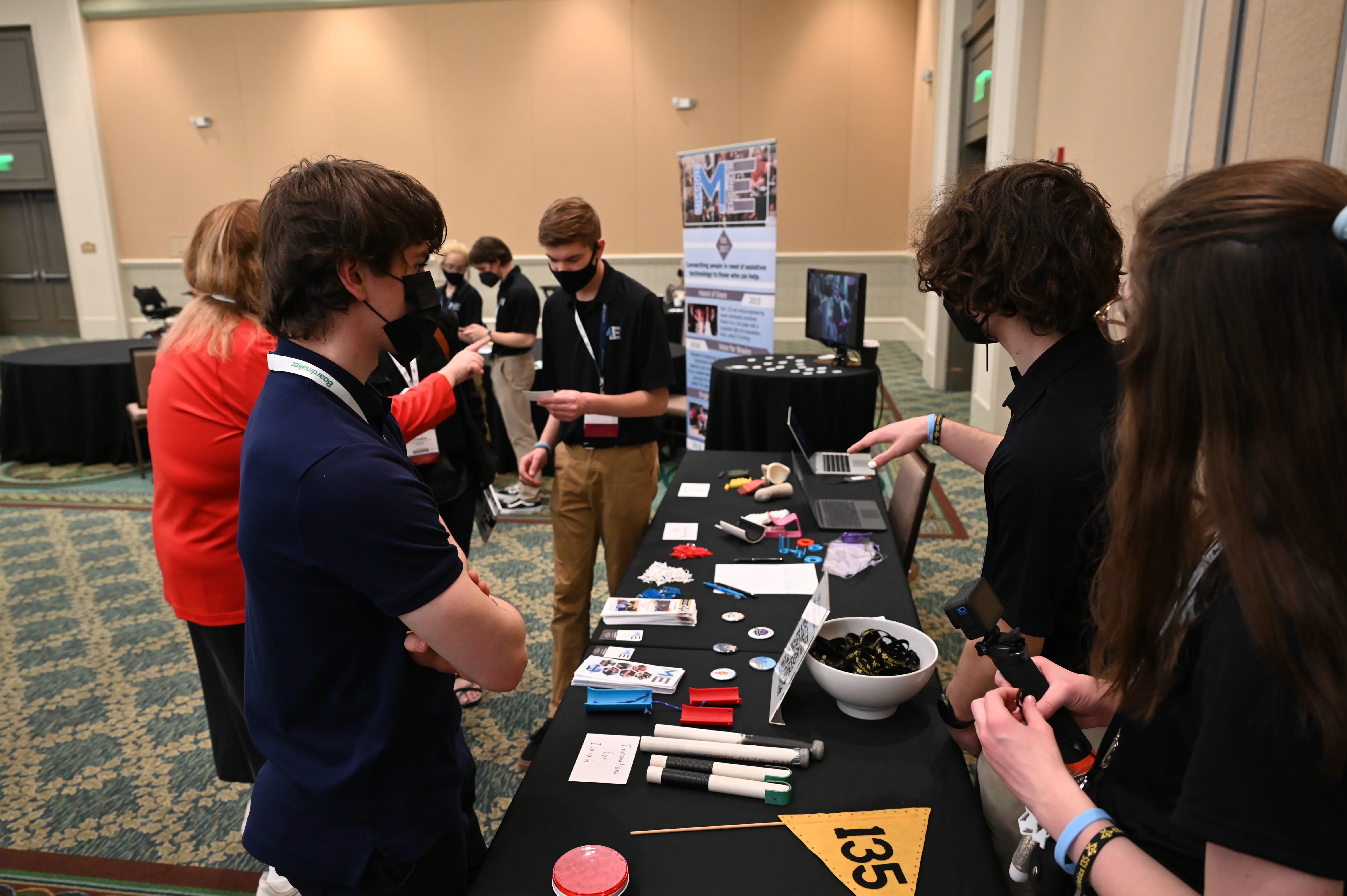
On January 26, 2022, Penn Robotics Team 135 students traveled down to Orlando, Florida in order to share information about our Mission to Engineer Program and showcase the projects that our ME team has completed. We had a great opportunity to showcase the sensory board we created for Cooper, a boy in our community who is faced with many obstacles when it comes to his learning development. The main goal of our presentation was to reconnect with AT professionals, such as Bill Binko (founder of ATMakers) and to learn more about the AT community. Throughout the conference and the Maker Day we interacted with lots of Assistive Technology professionals, Occupational Therapists (OT), Physical Therapists (PT), educators, and more. It was such an incredible opportunity for our ME team to make these connections and see the professional side of the AT industry. This event allowed our Mission to Engineer program to learn more about Assistive Technology and what path the program could take in the future.
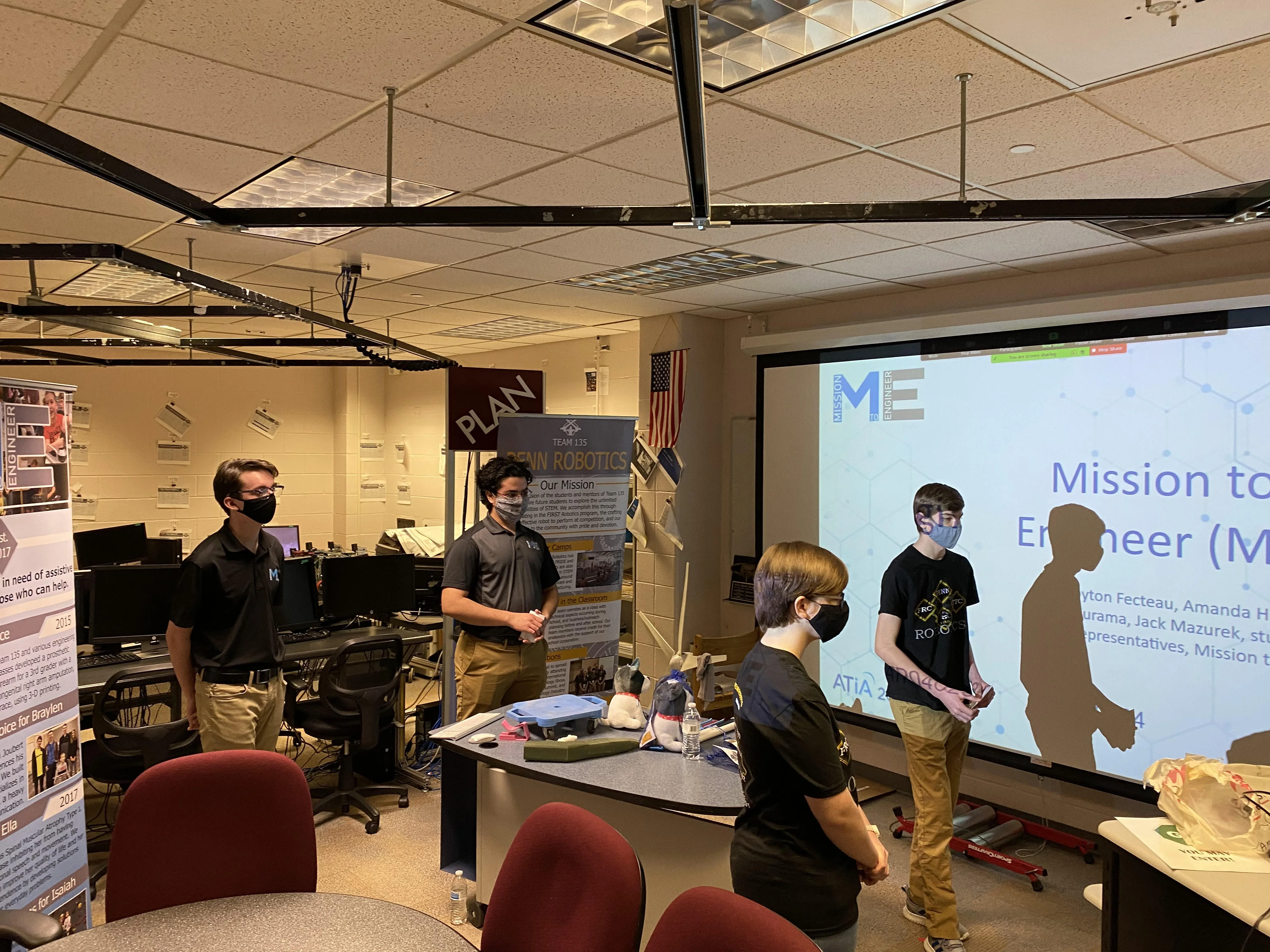
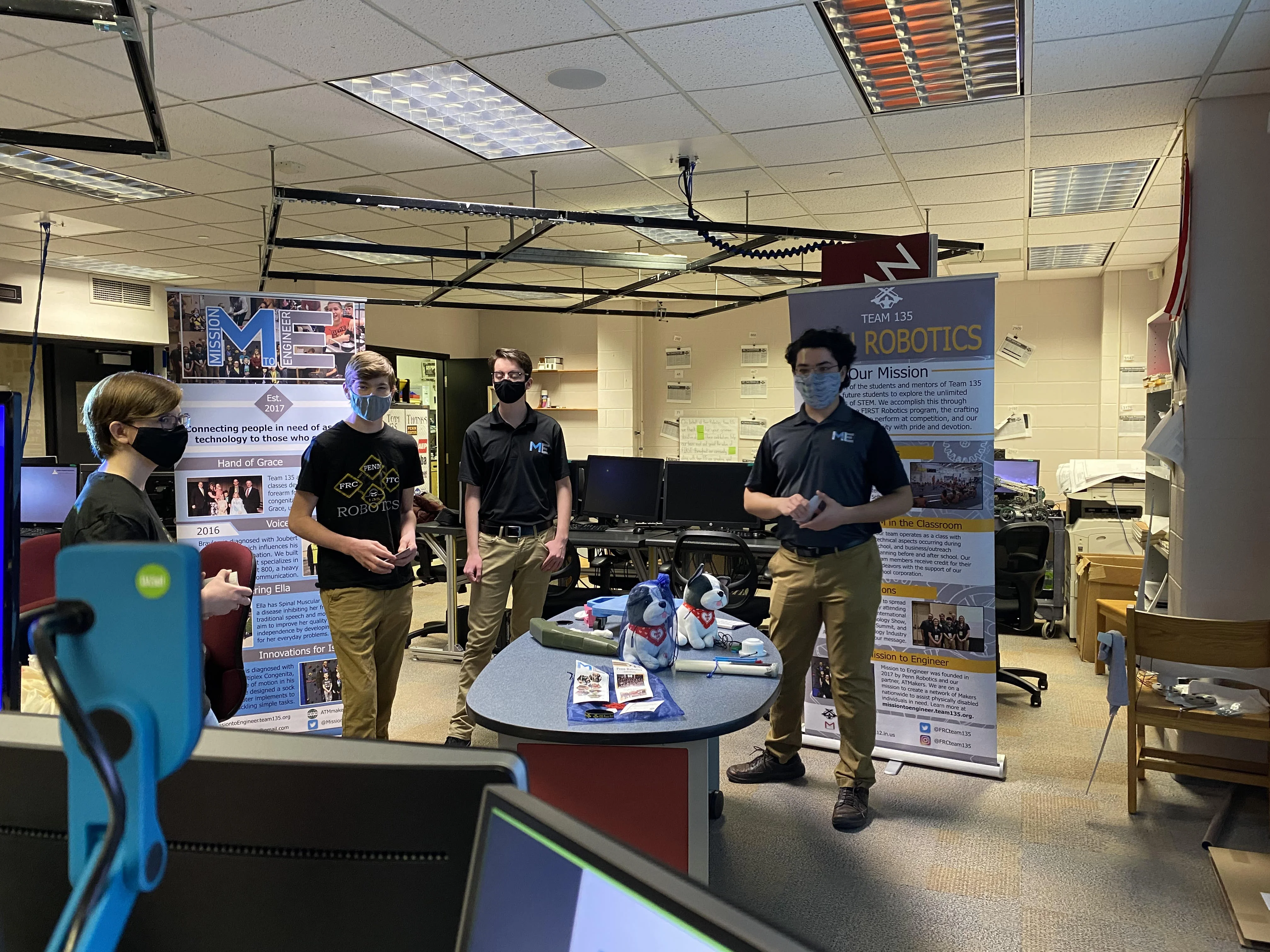
Due to Covid-19 the ATIA conference could not be held in Orlando, FL, so instead the conference was held virtually in January of 2021. Our team of two seniors and two juniors, presented about our past projects and the overall message of our Mission to Engineer (ME) program. Our student presenters were also given the opportunity to attend virtual sessions presented by Assistive Technology professionals, Occupational Therapists (OT), Physical Therapists (PT), educators, and more. Although virtual, this event allowed our students to become educators of our ME program and learn about Assistive Technology devices and solutions.
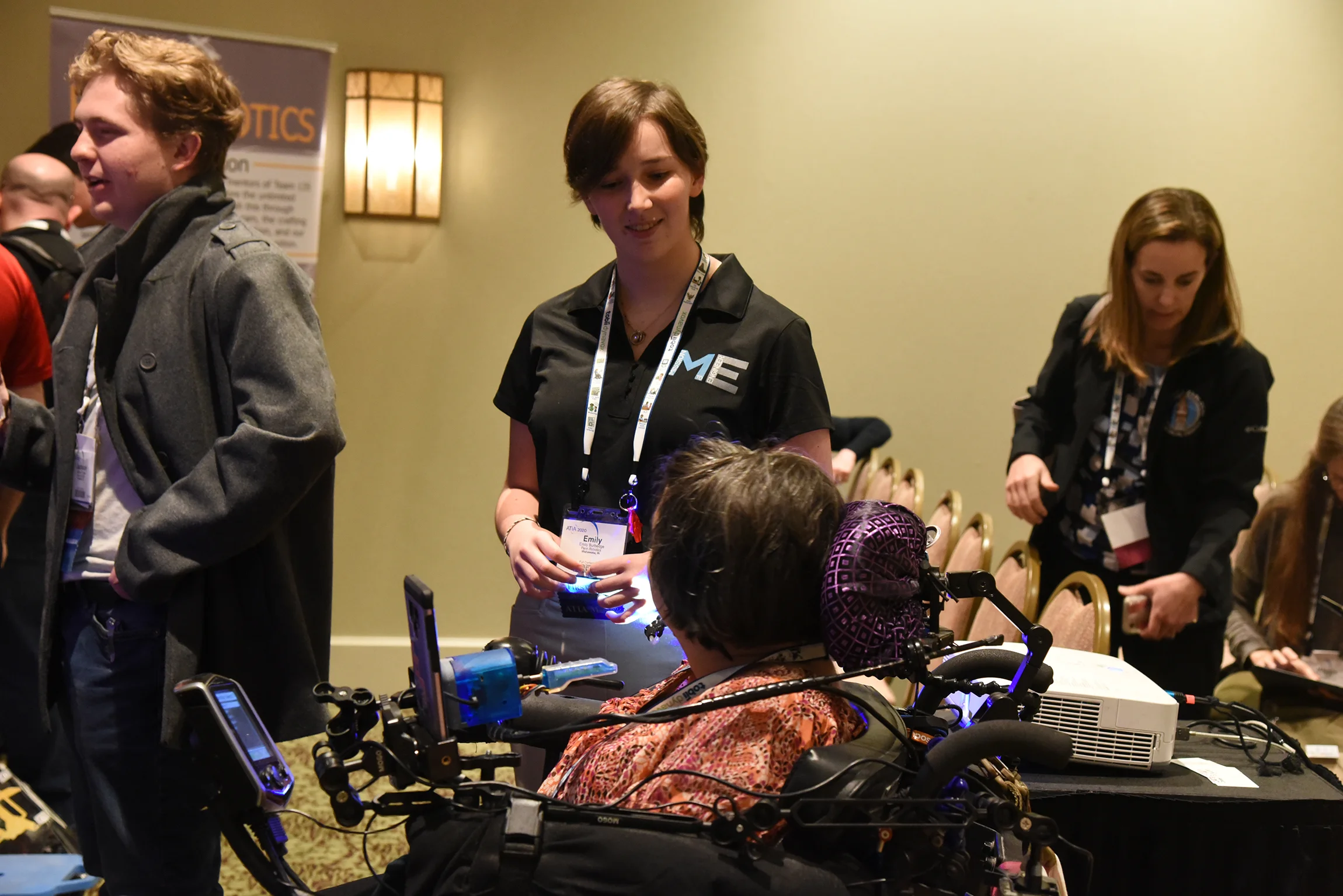
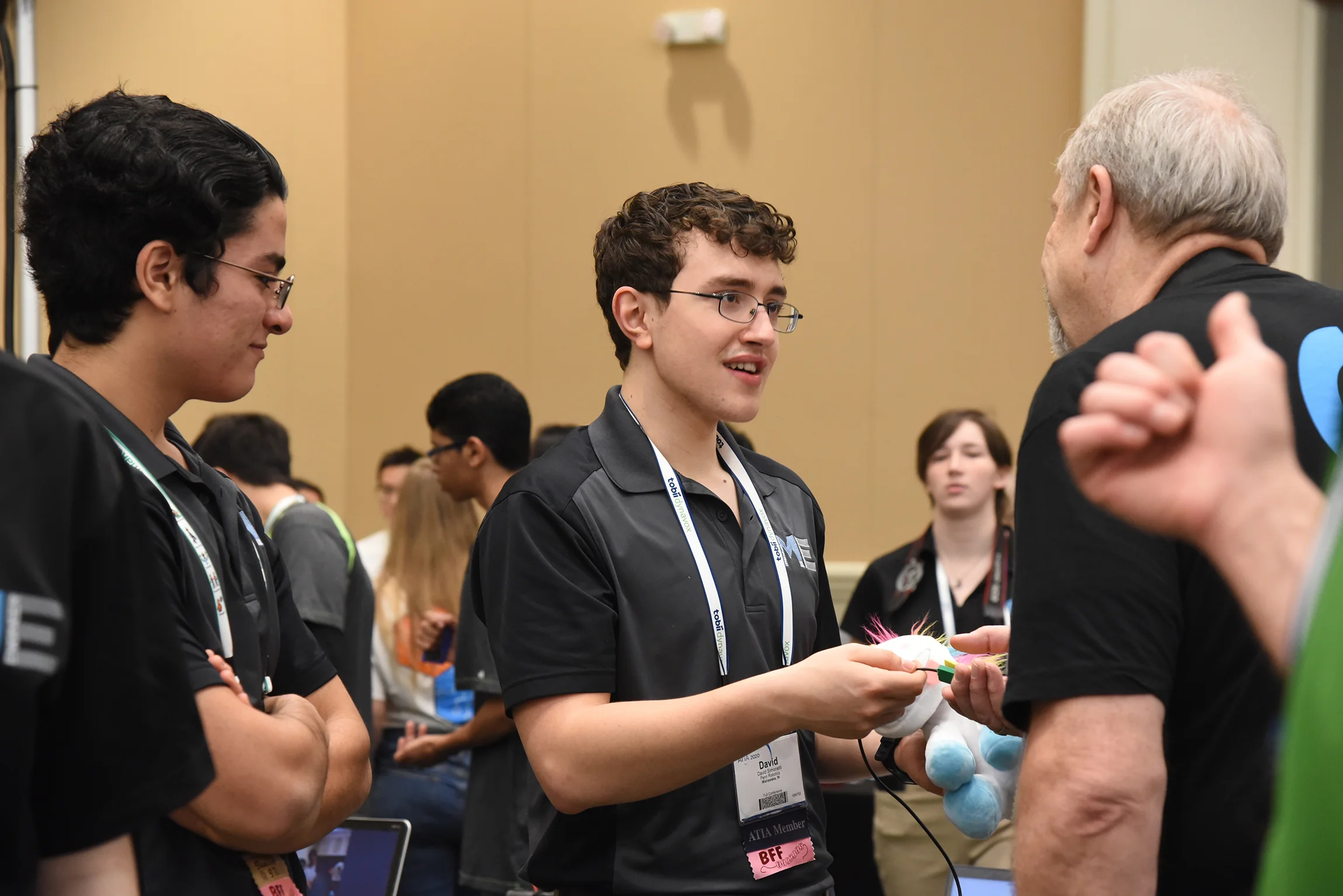
After months of planning, Team 135 traveled to Orlando, Florida to present at ATIA, a gathering of Assistive Technology vendors, Occupational Therapists (OT), Physical Therapists (PT), educators, and people with a wide range of disabilities. Being one of the two FRC teams presenting, Team 135 was honored with a 90-minute presentation slot to present ME. With an involved audience, we were able to tell our assistive technology story starting from Hand of Grace, going all the way to the current day with Innovations for Isaiah. We were also able to promote our ever-growing network of FRC teams able to help us with our cause. On the final day of the conference, our partner ATMakers (founded by Bill Binko), invited us back to the Exhibit Hall with a booth at their Maker Day 2.0. This is a widely loved part of ATIA where attendees get to learn more about what goes into making simple assistive technology. We talked with many people about ME while showing our outreach bot, Kiwi.
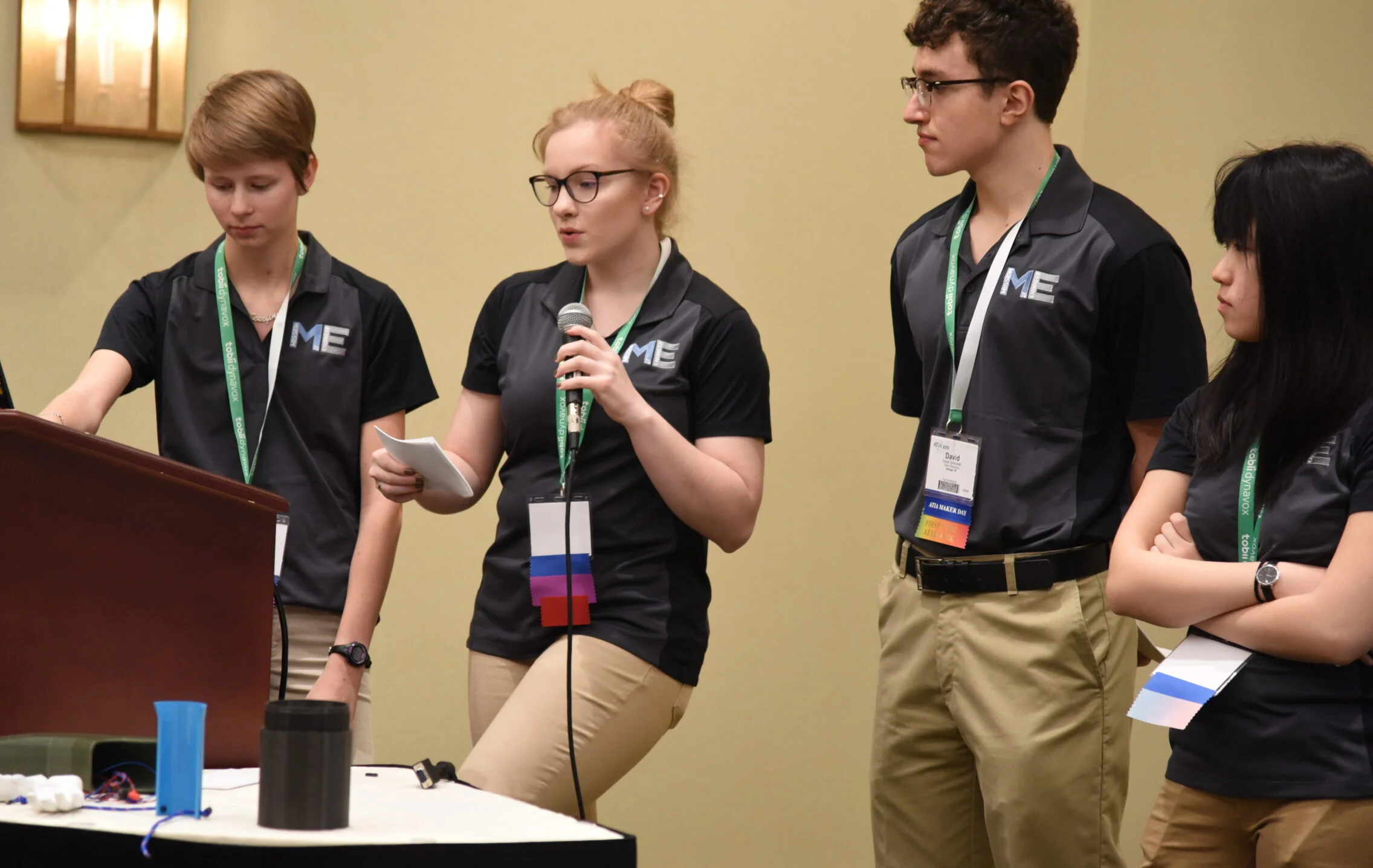
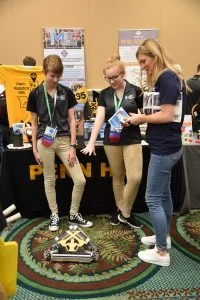
After months of planning, FRC Team 135’s Mission to Engineer team hopped on a plane to sunny Orlando, Florida to present at the Assistive Technology Industry Association (ATIA) conference. The ATIA conference is a gathering of Assistive Technology vendors, Occupational Therapists (OT), Physical Therapists (PT), educators, and people with a wide range of disabilities.
The largest attraction at this conference was the Exhibit Hall where hundreds of companies (including Google, Microsoft, and AbleNet) promoted their assistive technology devices and software to other vendors and medical professionals. Browsing around the Exhibit Hall, we were able to learn a lot about the current products on the market in the assistive technology community and how they can be implemented into people’s daily lives.
The heart and soul of ATIA, however, is the abundance of presentations that are held throughout the week. Being one of the two FRC teams presenting, Team 135 was honored with a 90 minute presentation slot at this highly esteemed conference. With an involved audience, we were able to tell our assistive technology story starting from Hand of Grace (2015), going all the way to current day with Innovations for Isaiah (2019). We were also able to promote our ever growing network of FIRST Robotics Competition teams able to help us with our cause.
On the final day of the conference, our partner ATMakers (founded by Bill Binko), invited us back to the Exhibit Hall with a booth at their Maker Day 2.0. This is a widely loved part of ATIA where attendees get to learn more about what goes into making many of the simple devices assistive technology uses. Makers Making Change held the “learn to solder” booth, while others held booths about instamorph and 3D printing. Team 135’s Mission to Engineer team held a presentation booth with a demo of our outreach robot named “Kiwi.” We talked to a lot of incredibly supportive attendees, and we’re excited to return to ATIA in 2020.
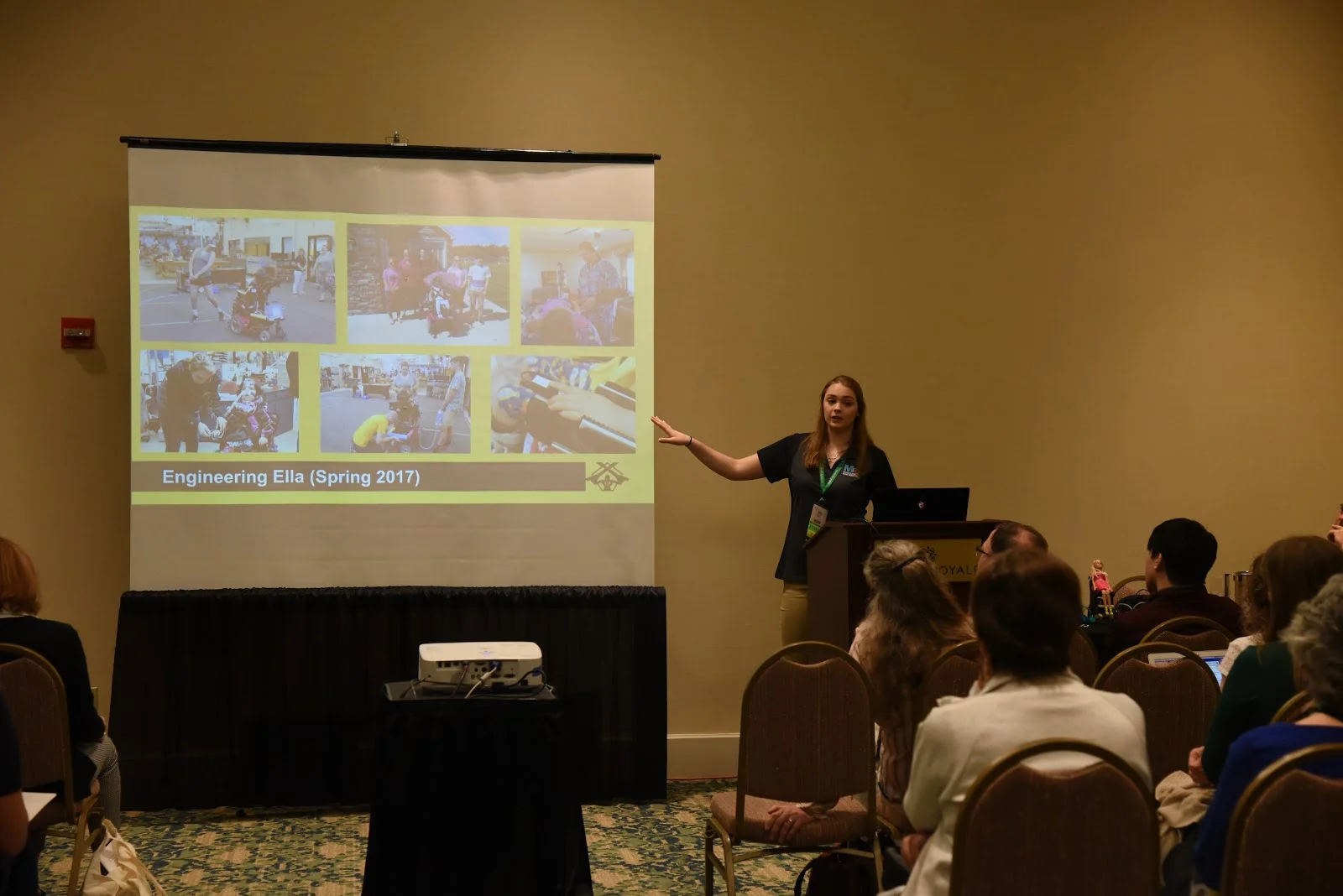
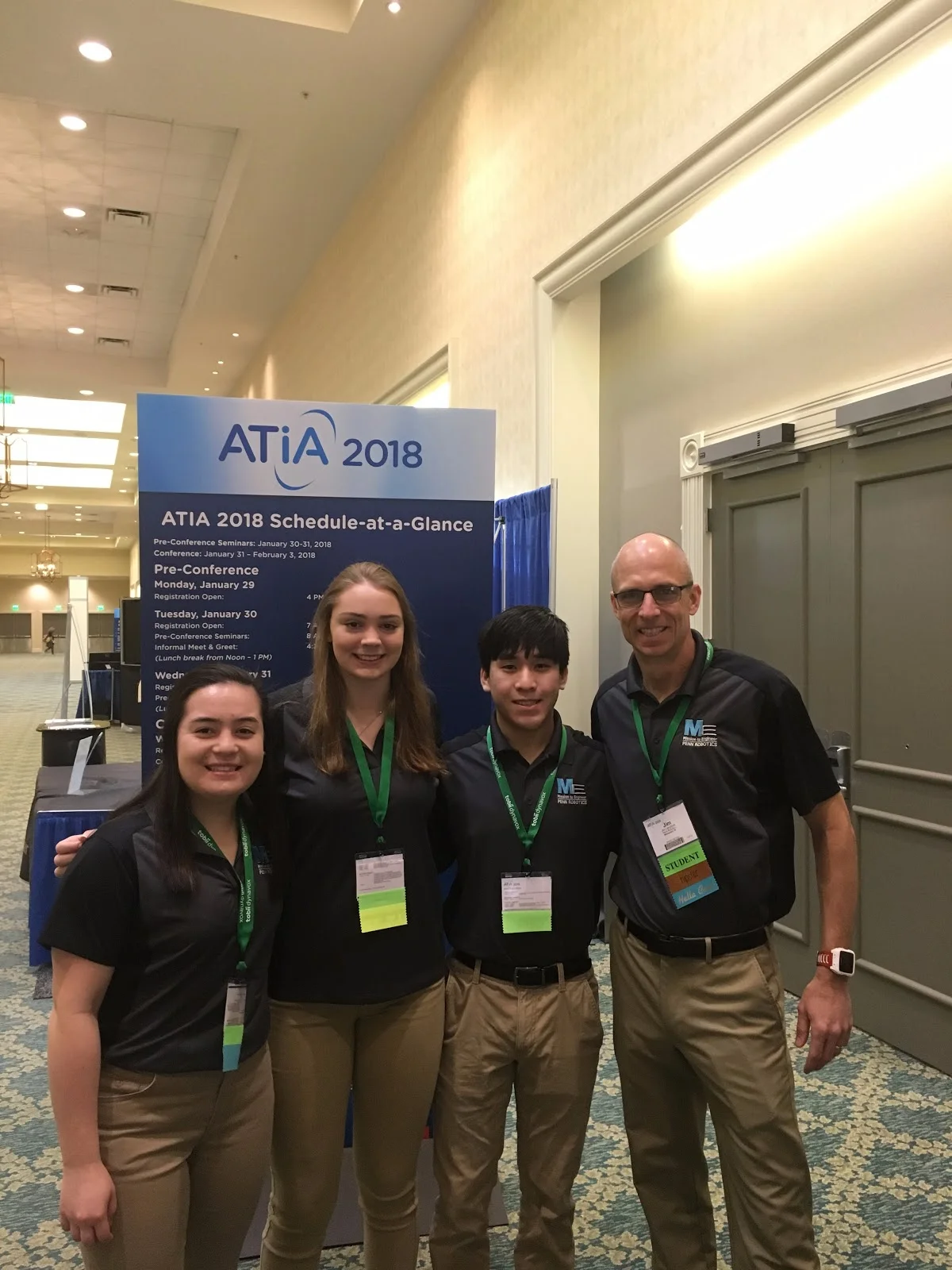
Penn Robotics Team 135 was invited to attend ATIA 2018 in order to present our project Mission to Engineer at a speaker session, alongside ATMakers founder Bill Binko and president of Inclusive Technology Solutions, LLC Mike Marotta, and during the MakerDay. Italia Fields, David Li, Olivia Adam, and Jim Langfeldt arrived in Orlando on January 31th and immediately hit the exhibit hall where we were able to meet some of the most prestigious AT providers and witness soon-to-be-released technology. The next day, Fields’ presentation focused on cost-effective AT solutions through local makers such as Penn Robotics. “It was an amazing opportunity to present alongside Bill Binko and Mike Marotta,” Italia said, “Both of them are huge figures in the AT Maker community. They taught me the importance of an AT program like the one we created, Mission to Engineer.” On Saturday, the team set up a presentation booth, brought an outreach robot, and delivered Mission to Engineer in-depth at the MakerDay. Our project garnered the attention of many of the attendees, some noting that this year’s conference was one of the most energetic and memorable conferences they have seen. “In the 21 years of Penn Robotics, this conference was the most impactful community outreach event we’ve ever been apart of,” said Jim Langfeldt, Robotics Coach. Overall, thousands of individuals were directly impacted by our attendance at ATIA.
